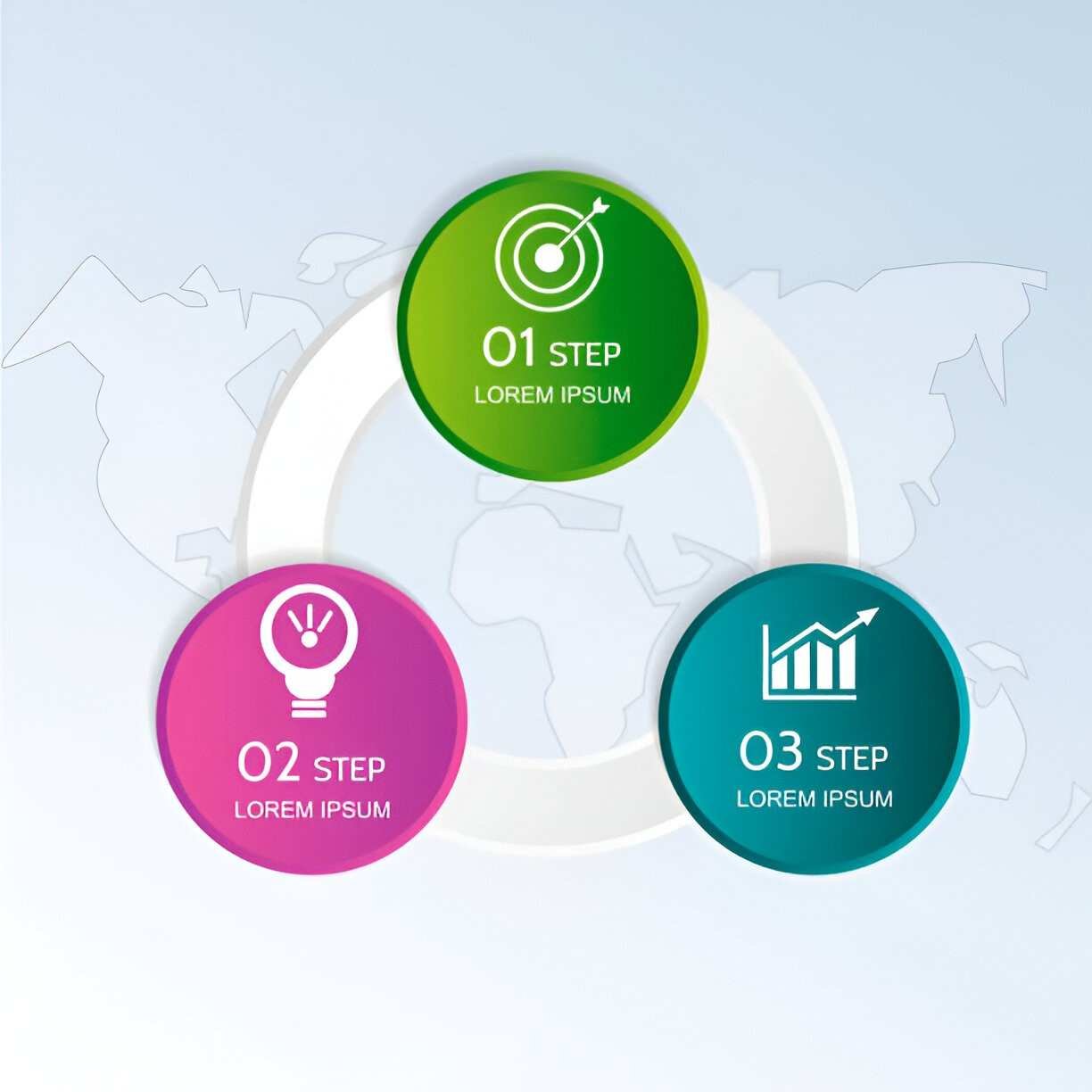Entrepreneurship is often seen as the driving force behind innovation and economic growth. It is the ability to take an idea and turn it into a viable business. However, when we look beyond the surface, entrepreneurship is more than just creating something new. It involves a delicate balance of three key components: mindset, resources, and strategy. In this article, I will dive deep into these three fundamental pillars of entrepreneurship, exploring how they interconnect and contribute to the success of a business. Understanding these components will not only help aspiring entrepreneurs, but also seasoned business owners seeking to refine their approach to growing a business.
Table of Contents
1. Mindset: The Foundation of Entrepreneurship
The entrepreneurial mindset is often considered the most important of the three components because it shapes how a person approaches business challenges. An entrepreneur’s mindset dictates their ability to make decisions, handle risks, and pursue opportunities. Without a proper mindset, even the best resources and strategies can falter. Let’s break down the key aspects of the entrepreneurial mindset:
a) Vision and Drive
Entrepreneurs must have a clear vision of what they want to achieve. This vision acts as a guiding light through the various challenges of building and running a business. A strong sense of purpose fuels drive and determination, which are necessary to navigate setbacks, competition, and market shifts. Entrepreneurs like Steve Jobs and Elon Musk have famously exemplified this visionary mindset, seeing potential in technologies and industries before the broader market did.
b) Risk Tolerance and Resilience
Entrepreneurship inherently involves risk. From financial investment to the uncertainty of product-market fit, there are no guarantees. A successful entrepreneur must embrace risk and exhibit resilience in the face of failure. Thomas Edison, for example, is known for his numerous failures before successfully inventing the light bulb. The ability to bounce back from setbacks is critical, as entrepreneurship rarely follows a straight path.
c) Adaptability and Continuous Learning
In today’s fast-paced world, industries change quickly. Entrepreneurs need to be adaptable, willing to learn from their experiences and continuously evolve their approach. Consider the way Netflix pivoted from a DVD rental service to a streaming giant. This kind of adaptability requires an openness to new ideas and an ability to make course corrections when needed.
2. Resources: The Fuel for Growth
Once the right mindset is in place, entrepreneurs need to acquire resources that will help turn their ideas into reality. Resources are the tangible and intangible assets that a business needs to operate, grow, and succeed. These resources can be broken down into several categories: financial, human, and physical.
a) Financial Resources
Capital is a fundamental resource for any business. Whether it’s funding product development, marketing campaigns, or scaling operations, financial resources are the lifeblood of a business. Entrepreneurs need to understand how to raise funds, manage cash flow, and make sound financial decisions. The sources of capital can come from personal savings, family and friends, angel investors, venture capital, or loans. For instance, Jeff Bezos started Amazon with a $300,000 investment from his parents, showcasing the role of early financial resources in the birth of a successful business.
b) Human Resources
People are arguably the most valuable resource in any business. As an entrepreneur, your team members bring skills, knowledge, and creativity that are essential for growing a business. Building the right team is crucial. This involves hiring people who complement your strengths and help fill in the gaps where you might be lacking. For instance, when Mark Zuckerberg co-founded Facebook, he relied on his technical co-founders, Eduardo Saverin and Andrew McCollum, to help him turn his vision into a reality. Without the right human resources, even the most innovative business idea can fall short.
c) Physical Resources
Physical resources include the tangible assets needed for day-to-day operations. This can be anything from office space to machinery or inventory. While some entrepreneurs may begin with limited physical resources, the way they manage them is essential. An entrepreneur must understand the trade-offs involved in investing in physical assets and how to balance these investments with cash flow. For example, during the early days of Tesla, Elon Musk focused on maximizing efficiency with limited physical resources before scaling up production.
3. Strategy: Turning Ideas into Action
Having the right mindset and resources is only half of the equation. The next critical component is strategy. Without a clear plan, an entrepreneur might struggle to move forward or waste resources inefficiently. A solid strategy ensures that the business is headed in the right direction, with a clear path to profitability and growth.
a) Market Research and Analysis
A strong business strategy begins with understanding the market. Entrepreneurs must gather data on competitors, customer preferences, industry trends, and potential challenges. Market research helps identify opportunities, validate assumptions, and create a roadmap for the business. For example, before launching Airbnb, its founders analyzed the existing market of hotels, short-term rentals, and customer needs to develop a unique value proposition.
b) Business Model and Value Proposition
A business model outlines how a company generates revenue and delivers value to its customers. Entrepreneurs must create a model that is both sustainable and scalable. This involves understanding how to price products, how to reach customers, and how to differentiate from competitors. Take the example of Uber, which disrupted the traditional taxi industry by offering an easy-to-use app-based platform for ride-sharing, providing both customers and drivers with value.
c) Marketing and Sales Strategy
Even the best products need a solid marketing and sales strategy to reach customers. Entrepreneurs must develop a plan for promoting their product or service, identifying the right target audience, and converting leads into paying customers. This may include digital marketing techniques such as social media advertising, search engine optimization (SEO), email marketing, and content creation. For instance, Dollar Shave Club used viral marketing to disrupt the razor industry and quickly build a loyal customer base.
Comparison Table: Mindset vs. Resources vs. Strategy
To help further clarify the relationship between these three components, let’s break down their roles in a table:
| Component | Role in Entrepreneurship | Key Focus Areas |
|---|---|---|
| Mindset | Shaping how entrepreneurs approach challenges and opportunities | Vision, risk tolerance, adaptability, resilience |
| Resources | Providing the tangible and intangible assets needed to operate the business | Financial, human, physical resources |
| Strategy | Creating a roadmap for turning ideas into profitable businesses | Market research, business model, marketing & sales |
Examples and Calculations
To understand how these components work together in real-life scenarios, let’s look at a hypothetical example:
Imagine an entrepreneur, Jane, who wants to start an online clothing brand. Her journey might look like this:
- Mindset: Jane is passionate about sustainable fashion and believes in providing eco-friendly alternatives to mass-produced clothing. She has a clear vision and is willing to take risks in an industry dominated by fast fashion.
- Resources: Jane raises $50,000 from friends and family to fund product development and website creation. She hires a small team of designers and web developers to help bring her vision to life. Additionally, she rents a small office for inventory storage.
- Strategy: Jane conducts market research and finds that millennials and Gen Z consumers are particularly interested in sustainability. She crafts a unique selling proposition around eco-friendly materials and ethical manufacturing practices. She sets up an online store and launches a targeted social media campaign.
Now, let’s say Jane’s initial production costs are $20 per piece of clothing, and she sells them for $50 each. She needs to calculate how many units she must sell to break even:
- Total initial investment: $50,000
- Production cost per unit: $20
- Selling price per unit: $50
To break even, Jane needs to cover her initial investment of $50,000:
\text{Break-even units} = \frac{\text{Total initial investment}}{\text{Selling price per unit} - \text{Production cost per unit}} \text{Break-even units} = \frac{50,000}{50 - 20} = \frac{50,000}{30} = 1,667 \text{ units}Jane needs to sell 1,667 units to break even. After that, every additional unit sold contributes to profit.
Conclusion: The Power of Combining Mindset, Resources, and Strategy
In conclusion, entrepreneurship is a delicate balance of mindset, resources, and strategy. Each component plays a vital role in determining the success or failure of a business. By cultivating the right mindset, acquiring the necessary resources, and developing a clear strategy, entrepreneurs can set themselves up for long-term success.
As I reflect on these components, it’s clear that entrepreneurship is not simply about having a great idea—it’s about execution. By focusing on these three foundational pillars, entrepreneurs can create businesses that not only survive but thrive in an ever-changing market.





